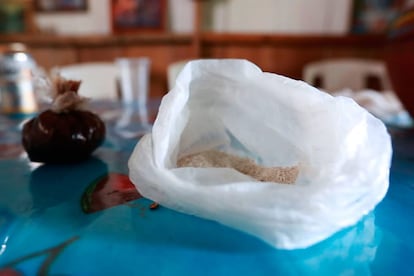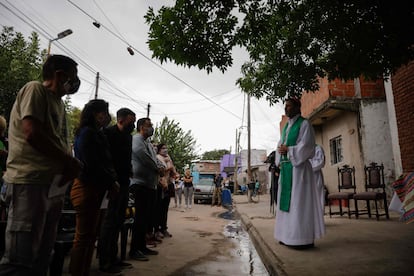Drug used to anesthetize elephants found in adulterated cocaine that killed 24 in Argentina
Carfentanil is 10,000 times more potent than morphine and 50 times stronger than heroin, and its use in humans is banned


Argentine investigators have found the needle in the haystack. On Thursday, experts identified the drug that adulterated the cocaine that killed 24 people on the outskirts of Buenos Aires last week. After nine days of trial and error, they discovered the culprit: carfentanil, an opioid 10,000 times stronger than morphine, 100 times stronger than fentanyl and 50 times stronger than heroin. The sedative use of carfentanil is restricted to large animals such as elephants and rhinoceroses, while human use is banned. The Argentine justice system must now work out how this opioid got into the adulterated cocaine – was it used to cut the drug, did it accidentally contaminate it or was it part of a mix that went wrong?

The tragedy began on February 2, when hospitals in the western outskirts of Buenos Aires were inundated with hundreds of people with serious respiratory problems. Twenty-four of the victims died. The rest were saved after responding to naloxone, an antidote to opioids such as fentanyl, a drug that is commonly used in surgeries as an anesthetic, but which can be potentially deadly if consumed without medical supervision. Investigators spent last week looking for fentanyl or another one of the more than 200 possible opioids that could have been responsible for the deaths. The officers worked long days, testing blindly for the opioid in question until finally, they met with success. “We have two studies that are saying carfentanil,” a legal source told EL PAÍS.
A press release from the Prosecutor’s Office of Buenos Aires Province later confirmed that “two independent, investigative studies have reached the conclusion that the substance used to stretch the cocaine hydrochloride in many of the sequenced samples is carfentanil, an extremely strong opioid.”
The victims bought the adulterated cocaine in Puerta 8, a makeshift settlement known for being the drug dealing hub of this part of the outskirts of Buenos Aires. All of the victims were poor and got by selling cardboard and other recyclables, and spent around a dollar for a dose.
The presence of carfentanil in the illegal drug market in Argentina is unprecedented. Handling this synthetic drug is extremely dangerous: just by coming into contact with skin it can kill a person due to absorption. Carfentanil poisoning is similar to any other opioid poisoning, which is why naloxone is an antidote. Although fentanyl was first suspected, investigators soon realized they were after a more powerful drug. “Fentanyl has a short half-life and we saw that the patients who were given naloxone woke up and then went to sleep again. We had to apply the antidote in drops for it to have an effect, and that indicated an opioid with a longer half-life,” explained Carlos Damin, the head of toxicology at Fernández Hospital.
But the identification of carfentanil does not bring the story to an end. Investigators must now look to see if it is present in more forensic samples taken from those killed by the cocaine. Only in this way will they be able to establish the cause and effect between the substance and the victims.
Tu suscripción se está usando en otro dispositivo
¿Quieres añadir otro usuario a tu suscripción?
Si continúas leyendo en este dispositivo, no se podrá leer en el otro.
FlechaTu suscripción se está usando en otro dispositivo y solo puedes acceder a EL PAÍS desde un dispositivo a la vez.
Si quieres compartir tu cuenta, cambia tu suscripción a la modalidad Premium, así podrás añadir otro usuario. Cada uno accederá con su propia cuenta de email, lo que os permitirá personalizar vuestra experiencia en EL PAÍS.
¿Tienes una suscripción de empresa? Accede aquí para contratar más cuentas.
En el caso de no saber quién está usando tu cuenta, te recomendamos cambiar tu contraseña aquí.
Si decides continuar compartiendo tu cuenta, este mensaje se mostrará en tu dispositivo y en el de la otra persona que está usando tu cuenta de forma indefinida, afectando a tu experiencia de lectura. Puedes consultar aquí los términos y condiciones de la suscripción digital.
More information
Últimas noticias
Most viewed
- Sinaloa Cartel war is taking its toll on Los Chapitos
- Oona Chaplin: ‘I told James Cameron that I was living in a treehouse and starting a permaculture project with a friend’
- Reinhard Genzel, Nobel laureate in physics: ‘One-minute videos will never give you the truth’
- Why the price of coffee has skyrocketed: from Brazilian plantations to specialty coffee houses
- Silver prices are going crazy: This is what’s fueling the rally










































